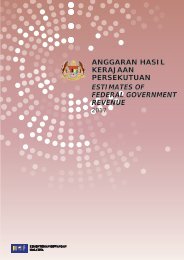WEALTH
2c0esX1
2c0esX1
You also want an ePaper? Increase the reach of your titles
YUMPU automatically turns print PDFs into web optimized ePapers that Google loves.
OPENING BELL<br />
BRIGITTE MIKSA<br />
Head of International Pensions<br />
CHANGING DYNAMICS<br />
“The first wealth is health,” claimed American poet<br />
Ralph Waldo Emerson. It is a sentiment that many in the rapidly<br />
growing economic region of Asia can share<br />
JOIN THE<br />
CONVERSATION<br />
Want more? PROJECT M is<br />
also available online. Visit<br />
projectm-online.com or<br />
follow @ProjectMOnline<br />
on Twitter for more<br />
updates and news<br />
Despite increasing riches, many people are<br />
realizing that wealth is a poor substitute for<br />
good health. Increasingly, as Asia develops, it is<br />
adopting the disease profile of the West.<br />
Sickness and death by communicable diseases,<br />
such as cholera and typhoid, are giving<br />
way to those caused by non-communicable<br />
diseases (NCDs), such as cancers, heart disease<br />
and diabetes.<br />
This is partially a good-news story. The<br />
diseases and pestilences that killed people at<br />
an early age are being subdued, which is<br />
allowing Asians to enjoy the benefits of a ripe<br />
older age. But as societies in the region grow<br />
older, their populations are increasingly<br />
succumbing to the chronic diseases that<br />
cause so much pain, suffering and death in<br />
the developed world.<br />
The shame of it is that much of this is<br />
preventable. Unhealthy diets, lack of physical<br />
exercise, tobacco use and harmful drinking,<br />
all greatly increase the risk of NCDs. The<br />
Western world is still grappling with how to<br />
combat this growing plague, but for Asia the<br />
matter is assuming ever greater urgency. The<br />
region is aging at the fastest rate in history<br />
and, consequently, undergoing the fastest<br />
epidemiological transition as well.<br />
This will place healthcare systems still<br />
grappling with the implementation of social<br />
care under increasing pressure. Urgency,<br />
flexibility and creativity will be required to<br />
tackle NCDs, so that in the next decades<br />
billions of people can benefit through longer,<br />
higher-quality lives.<br />
Insurance will also play an important role<br />
in this. The growing Asian middle class, which<br />
will be the key driver of global consumption<br />
in the future, will see health insurance as an<br />
important purchase, along with consumer<br />
goods and education. But for it to meet the<br />
needs of clients in Asia, insurance will need to<br />
develop new models and new delivery methods,<br />
some of which we explore in this edition.<br />
Yours sincerely,<br />
Brigitte Miksa, September 2016<br />
Allianz • 3



